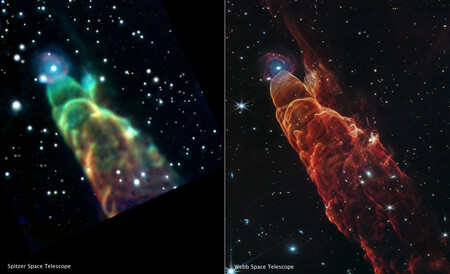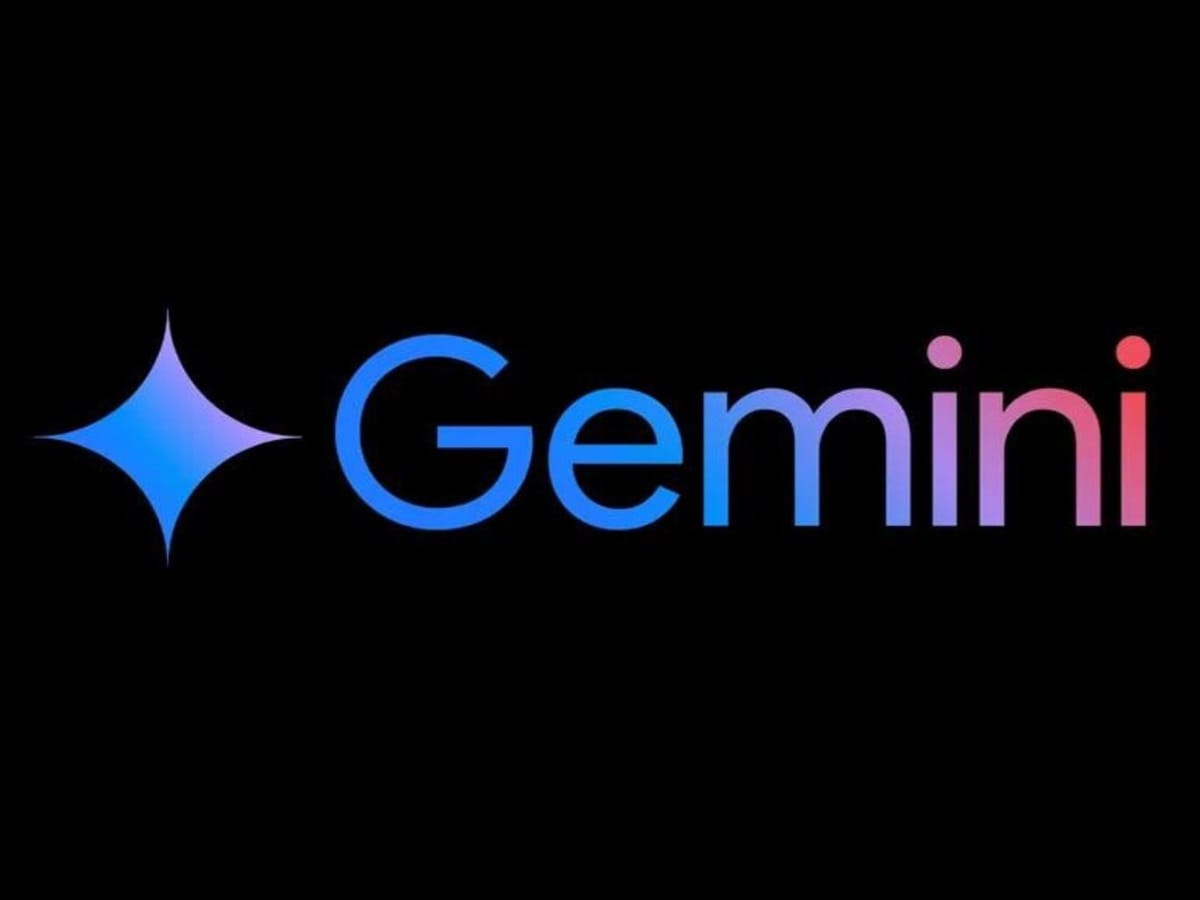Appearances often deceive. A unbridled eye could well confuse one of the planets in our solar neighborhood, such as Venus, with a distant star. We could also see an image taken by a telescope and think that the two objects that most attract attention on it are part of the same cosmic phenomenon.
This is precisely what happens in the last image of the James Webb space telescope (JWST).
A cosmic tornado. While the new image seems to show a huge nebula filled by a star on the tip; What we see is actually the combination of the emanations expelled by a nascent star, called Herbig-Haro 49/50, and a galaxy located far behind in the plane.
Herbig-Haro. The so-called Herbig-Haro objects are produced by the process of formation of a star, specifically they are the result of the expulsion of matter during this process, matter that can accumulate in regions several light years away from the birthplace of the star. This matter “cools” emitting light both in the visible spectrum and infrared.
Herbig-Haro 49/50 (HH 49/50) is one of these objects. The appellation of “cosmic tornado” received it after the Spitzer space telescope observed it in 2006. The image did not allow to distinguish with certainty what type of object we saw at the tip of this cosmic tornado.
A distant galaxy. The new image of James Webb allows us to see this luminous object with great definition, showing us the small details of a distant spiral galaxy. In its bluish center are the oldest stars. In its spirals of more reddish tones the galactic dust and areas of intense star formation would be concentrated.


Comparison between the image of the Spitzer Space Telescope taken in 2006, and the last Inagen captured by the James Webb. NASA, ESA, CSA, STSCI, NASA-JPL, SSC
Back to the foreground. But, let’s return to Herbig-Haro 49/50, the foreground of the image. The cloud of matter we see is within our galaxy, about 625 light years from our solar system. What we see are waves of bright hydrogen molecules, carbon dioxide and dust grains loaded with energy, red and orange tints in this false color photo.
This formation is found in the Chamaeleon I cloudy complex, one of the regions with the formation activity of closer stars in our galaxy. Experts estimate that this “jet” of matter moves between 100 and 300 kilometers per second.
And what about the star you are emanating? Astronomers believe that it is about Cederblad 110 IRS4, a protoestrella located at 1.5 light years of this cloud and visible in the image of the JWST, down to the right. Cederblad 110 IRS4 is a class I protoestrel, that is, it is in a rapid accumulation phase of matter.
A combined image. The new image captured by the JWST is a combination of several snapshots taken by this telescope fruit of international collaboration. To create it, observations of two of the instruments of James Webb, Nircam were combined (Near-Infrared Camera), And Miri (Mid-Infrared Instrument).
In WorldOfSoftware | These real images were unthinkable before the Webb Telescope: they are planets orbiting other stars to 130 light years
Image | NASA, ESA, CSA, STSCI











